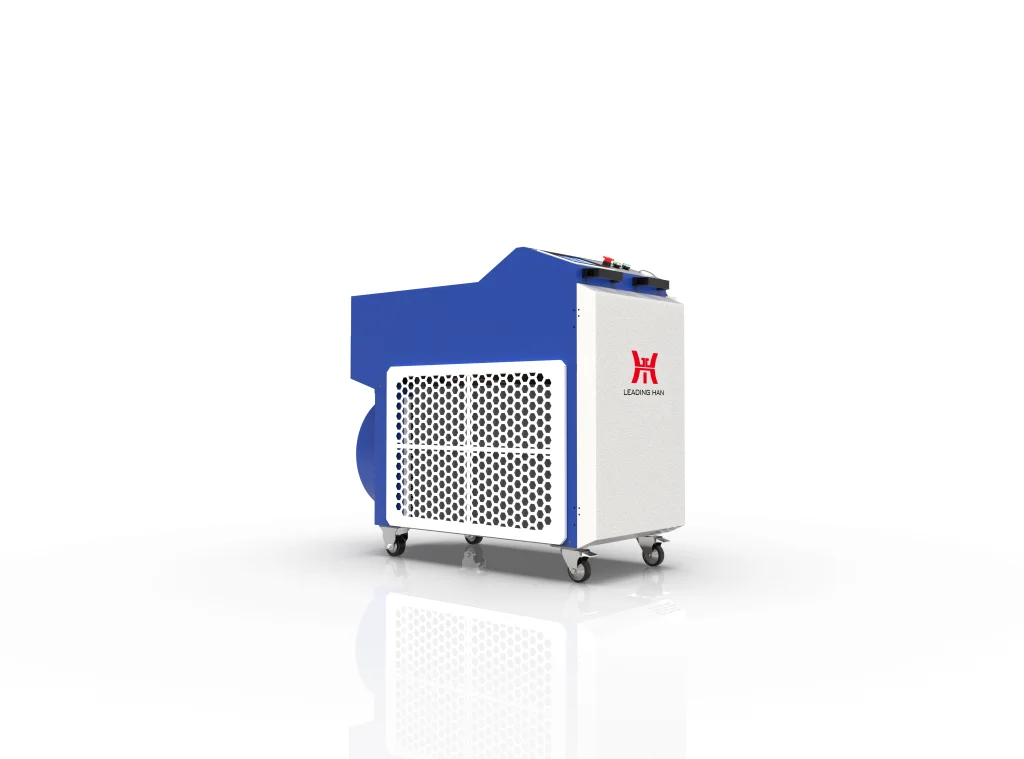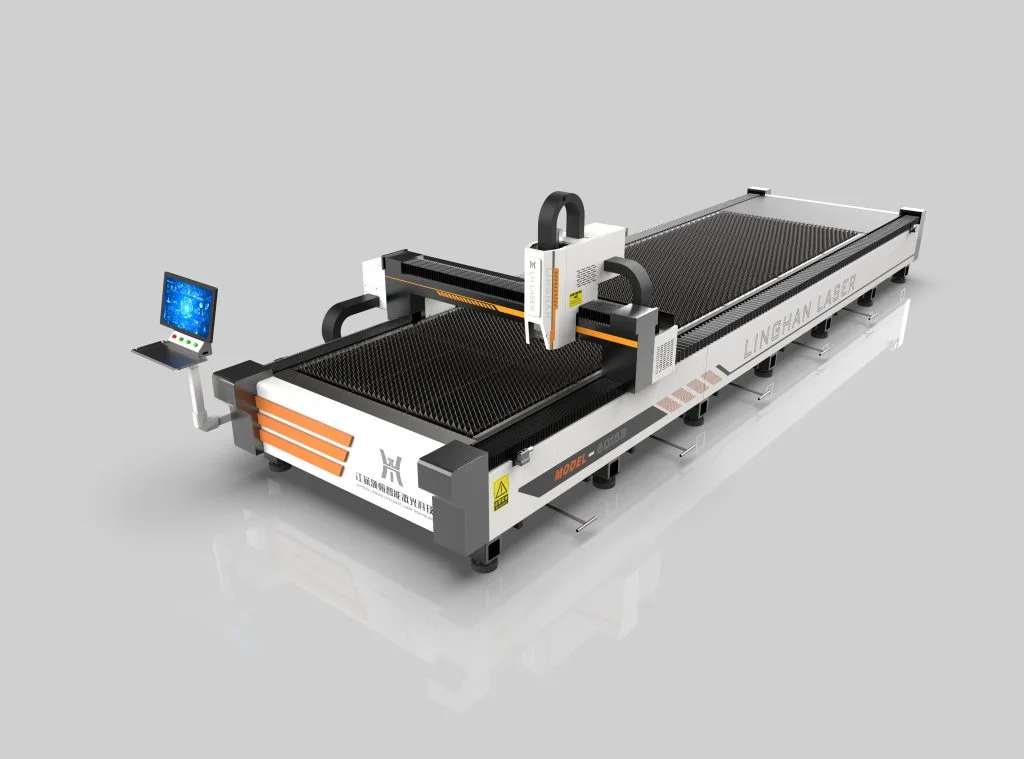In der heutigen industriellen Anwendung muss die Oberfläche vor dem Schweißen und nach dem Schweißen gereinigt werden, um die Produktqualität zu erhalten. Die herkömmliche chemische oder abrasive Reinigung ist zeitaufwändig und mühsam und trägt nicht zu einer sauberen Umgebung bei. Die in der Schweißreinigungsmaschine eingesetzten Technologien, Laser-Reinigungsanlageund Laserschweiß- und Reinigungsmaschinen zeigten die neuen und effizienten Verfahren. Diese neuen Maschinen sind präzise, wirtschaftlich und umweltfreundlich und damit eine unabdingbare Notwendigkeit für Branchen wie Automobilbau, Luftfahrt, Schiffbau und Feinmechanik.
Dieser Artikel enthält eine vollständige Beschreibung der Maschinen, der Arbeitsweise der Maschinen, der wichtigsten Vorteile, der Anwendungen in der Industrie und der Auswahl geeigneter Maschinen für bestimmte betriebliche Anforderungen.
1. Schweißer-Reinigungsmaschine: Oberflächenvorbereitung von größter Wichtigkeit
A Technologie Wissen
A Schweißreinigungsmaschine ist ein Gerätetyp, mit dem unerwünschte Materialien wie Öl, Rost, Farbe, Oxide und andere Fremdpartikel von der Metalloberfläche entfernt werden, bevor ein Schweißvorgang durchgeführt wird. Die Vorbereitung der Oberfläche ist von entscheidender Bedeutung, um die meisten Schweißfehler wie schlechtes Schmelzen, Porosität, Schlackeneinschlüsse und mangelndes Eindringen zu vermeiden, was die Festigkeit der Verbindung erheblich beeinträchtigen kann.
Arten von Schweißerreinigungsmaschinen
- Abrasive Strahlsysteme: Stahlkorn, das mit hoher Geschwindigkeit gestrahlt wird, Aluminiumoxid oder Glasperlen
- Elektrochemische Reiniger: Entfernen Oxide durch chemische Lösung und Elektrizität
- Ultraschall-Reiniger: Flüssigkeitsbäder mit hochfrequentem Schall für eine präzise Reinigung
- Plasma-Reiniger: Optimal für die Entfernung von organischen Verunreinigungen durch die Behandlung mit ionisiertem Gas
Schlüsselbegriffe:
- Vielseitigkeit: Einsetzbar für alle Arten von Materialien und Verschmutzungsgrade
- Tragbarkeit: Im Gegensatz zu den großen Maschinen können sie ins Feld mitgenommen werden
- Kosten-Nutzen-Verhältnis: In der Anfangsphase weniger teuer als Lasersysteme
Industrielle Anwendungen:
- Schwerer Schiffbau und Offshore-Anlagenbau
- Bau und Instandhaltung von Pipelines
- Gewerblicher Stahlhochbau und Brückenbau in Massenproduktion
- Herstellung von Kraftfahrzeugteilen
Obwohl eine herkömmliche Reinigungsmaschine äußerst effizient ist, hat sie einige Nebenwirkungen in Bezug auf Medienverbrauch, Abfall und Oberflächenbeschädigung, die durch den Einsatz von Laserreinigungsmaschinen vermieden werden können.

2. Laser-Reinigungsmaschine: Quantensprung in der Oberflächenbehandlung
Aufschlüsselung der Technologie
Hochenergetische Laserpulse mit einer Präzision im Nanometerbereich werden in einer Laserreinigungsmaschine eingesetzt, um Oberflächenverunreinigungen abzutragen oder zu verdampfen, ohne das Substrat zu beschädigen. Dies ist ein qualitativer Sprung gegenüber herkömmlichen Reinigungstechnologien, da es sich um eine berührungslose und nicht-abrasive Reinigungstechnologie handelt.
Funktionsprinzipien:
- Gepulste Laserablation: Molekulare Bindungen des Schadstoffs werden durch hochenergetische Pulse gebrochen
- Photomechanischer Effekt: Wärmeausdehnung mit hoher Geschwindigkeit drückt die Partikel von der Oberfläche
- Verdampfung: Durch Erhitzen mit hoher Geschwindigkeit und hoher Temperatur wird der Schadstoff in den Dampfzustand überführt.
Große Vorteile:
- Mikroskopische Genauigkeit: Angewandt zur selektiven Entfernung von Verunreinigungen mit einem Durchmesser von bis zu 10 Mikrometern
- Schutz des Materials: Ohne Wärmeverzug oder mechanische Beanspruchung
- Keine Verbrauchsmaterialien: Keine wiederkehrenden Kosten für Schleifmittel oder Chemikalien
- Saubere Prozesse: Keine VOC-Emissionen oder giftige Abfälle
- Computersteuerung: Parametrische Programmierbarkeit bei einer Reihe von Materialien
Capstone-Anwendungen
- Reparatur und Überholung von Luft- und Raumfahrtkomponenten
- Dekontaminierung von Kernkraftwerken
- Reinigung von Halbleiterwafern
- Bewahrung des kulturellen Erbes
- Oberflächenbehandlung von medizinischen Implantaten
Geräte für das Laserschweißen und die Reinigung können beide einbezogen werden, wenn Oberflächen geschweißt und gereinigt werden müssen.

3. Laserschweiß- und Reinigungsmaschine: Die optimale Systemintegration
Systembeschreibung
Laserschweiß- und Reinigungsmaschine integriert hochpräzise Laserschweißtechnik und Inline-Laserreinigungstechnik in ein einziges Automatisierungssystem. Das kombinierte System ist die beste Darstellung des neuesten Stands der Verbindungstechnologie.
Technologie mit Doppelfunktion:
- Reinigung vor dem Schweißen: Entfernt alle Oberflächenverunreinigungen zum Zeitpunkt des Schweißens
- In-Process-Überwachung: Echtzeit-Inspektion in Synchronisation mit dem Schweißprozess
- Schweißnaht-Nachbehandlung: Behandelt wärmebeeinflusste Zonen und entfernt Oxidation
Operative Vorteile:
- Nahtlose Prozessintegration: Eine Installation für alle Prozesse
- Verbesserte Schweißnahtqualität: Vermeidung von Defekten aufgrund von Verunreinigungen
- Eliminierung der Handhabung auf das absolute Minimum: Eliminiert die Handhabung von Teilen von Station zu Station
- Platz sparend: Kombiniert zwei Prozesse auf einer Stellfläche
- Pflege von Daten in Aufzeichnungen: Digitale Aufzeichnungen der Qualitätsprüfung
Anwendungen in der Industrie:
- Herstellung von Batterien für Elektrofahrzeuge: Hochpräzise Schweißnähte mit oxidfreier Oberfläche
- Überholung von Luft- und Raumfahrtturbinen: Überholt kritische Teile
- Herstellung medizinischer Geräte: Saubere, partikelfreie Montage
- Mikroelektronik: Montage von Bauteilen mit hoher Schrittweite
4. Vergleichende Analyse: Auswahl der besten Lösung
Parameter für die Entscheidungsfindung:
| Parameter | Reinigungsmaschine für Schweißer | Laser-Reinigungsmaschine | Laserschweißen/Reinigen Combo |
| Anfängliche Kosten | Niedrig | Mittel | Hoch |
| Betriebskosten | Mittel | Niedrig | Mittel |
| Präzision | Mäßig | Hoch | Sehr hoch |
| Geschwindigkeit | Schnell | Mittel | Schnell |
| Material Vielseitigkeit | Hoch | Mittel | Mittel |
| Automatisierungspotenzial | Begrenzt | Hoch | Sehr hoch |
| Auswirkungen auf die Umwelt | Mittel | Niedrig | Niedrig |
Leitlinien für die Auswahl:
- Hochvolumige Produktion: Hybride Lasersysteme bieten den besten ROI
- Empfindliche Komponenten: Mit Laser Cleaning reinigen, um Schäden zu vermeiden
- Einsätze vor Ort: Tragbare Schweißreiniger sind ideal
- Regulierte Industrien: Lasersysteme bieten Konformität
5. Trends und Entwicklungen
Die Wissenschaft der Oberflächenbehandlung und des Fügens entwickelt sich mit einer Reihe interessanter Entwicklungen rasch weiter:
- KI-gestützte adaptive Reinigung: Parameter für maschinelles Lernen, die sich selbständig verbessern und weiterentwickeln
- Hybride Lasersysteme: Verschmelzung von Faser-, gepulsten und Dauerstrichlasern
- Mobile Reinigungsroboter: Automatisierte Roboter für das Schrubben kolossaler Strukturen
- Grüne Lasertechnologie: Erhöhte Absorption für harte Materialien
- Quantum Dot Anwendungen: Nanotechnologie für superpräzise Reinigung
Schlussfolgerung
Die Entwicklung der Schweißnahtreiniger von herkömmlichen Reinigern zu hochtechnologischen Laserreinigern und schließlich zu hybriden Laserschweißgeräten und -reinigern verdeutlicht den Schwerpunkt der Industrie auf Genauigkeit, Wirksamkeit und Umweltfreundlichkeit. Jedes Gerät hat spezifische Anwendungen:
- Herkömmliche Reinigungsmittel werden nach wie vor in Hochleistungsbetrieben eingesetzt
- Lasermaschinen bieten unvergleichliche Genauigkeit für wichtige Teile
- Hybride Lösungen bieten maximale Effizienz für hochwertigen Output
Nach der Installation dieser Art von Technologie muss sie in einem Produktionslauf vor Ort getestet werden, wobei die Gesamtbetriebskosten zu berücksichtigen sind und die Schulung der Bediener geplant werden muss. Mit der richtigen Investition in die Oberflächenvorbereitung und die Verbindungstechnik können Produktqualität, Produktionsrate und Umweltverträglichkeit hervorragend erreicht werden.
Technische Berater arbeiten mit der Nutzung solcher Systeme, um eine optimale Technologieauswahl zu treffen, und die Integration muss auf einer professionellen Bewertung der spezifischen Anforderungen jeder Anwendung basieren.